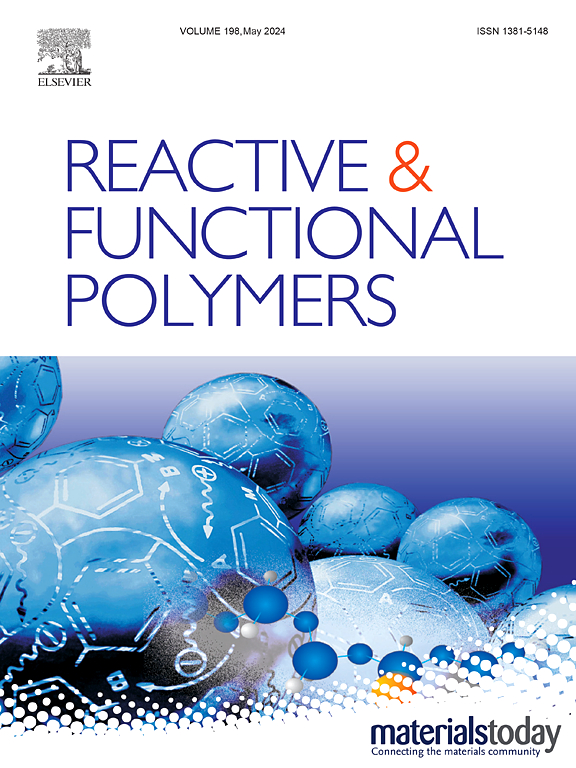磷改性本征阻燃环氧树脂的制备及性能研究
IF 5.1
3区 工程技术
Q1 CHEMISTRY, APPLIED
引用次数: 0
摘要
目前,EP主要通过添加阻燃添加剂来增强其耐火性。然而,这种方法面临着诸如阻燃剂迁移等挑战,这进一步导致树脂基体的机械性能降低和粘度增加。为了解决这些挑战,本研究以POG和PEPA为原料合成了一种新型的液体反应性阻燃剂(POG-PEPA),并将其用于制造本质耐火的EP。磷含量为3.3 wt%的改性EP具有较好的阻燃性能,LOI为29.8%,UL-94 V-0等级,而PHRR(52.6%)、THR(76.8%)和TSR(60.2%)较纯EP有显著降低。增强阻燃性主要是由于POG-PEPA在缩合相中促进了炭的形成。此外,改性EP表现出更好的力学和热力学性能:拉伸模量提高22.7%,Tg提高5°C。本研究为设计环保型高性能EP及其复合材料阻燃剂提供了有效的策略。本文章由计算机程序翻译,如有差异,请以英文原文为准。

Preparation and properties of a phosphorus modified intrinsic flame-retardant epoxy resin
Currently, EP primarily enhances its fire resistance by incorporating flame-retardant additives. However, this approach faces challenges such as flame retardant migration, which further leads to reduced mechanical properties and increased viscosity of the resin matrix. To address these challenges, a novel liquid reactive flame retardant (POG-PEPA) is synthesized from POG and PEPA and employed to create an intrinsically fire resistance EP in this work. Modified EP containing 3.3 wt% phosphorus demonstrates enhanced flame retardancy, achieves a LOI of 29.8 % and UL-94 V-0 rating, while shows significant reductions in PHRR (52.6 %), THR (76.8 %), and TSR (60.2 %) compared with neat EP. The enhanced flame retardancy primarily originates from the promotion of char formation by POG-PEPA in condensed phase. Additionally, modified EP exhibit improved mechanical and thermodynamics properties: a 22.7 % rise in tensile modulus and a 5 °C improvement in Tg. This study provides an effective strategy for designing eco-friendly, superior-performance flame retardant for EP and its composites.
求助全文
通过发布文献求助,成功后即可免费获取论文全文。
去求助
来源期刊

Reactive & Functional Polymers
工程技术-高分子科学
CiteScore
8.90
自引率
5.90%
发文量
259
审稿时长
27 days
期刊介绍:
Reactive & Functional Polymers provides a forum to disseminate original ideas, concepts and developments in the science and technology of polymers with functional groups, which impart specific chemical reactivity or physical, chemical, structural, biological, and pharmacological functionality. The scope covers organic polymers, acting for instance as reagents, catalysts, templates, ion-exchangers, selective sorbents, chelating or antimicrobial agents, drug carriers, sensors, membranes, and hydrogels. This also includes reactive cross-linkable prepolymers and high-performance thermosetting polymers, natural or degradable polymers, conducting polymers, and porous polymers.
Original research articles must contain thorough molecular and material characterization data on synthesis of the above polymers in combination with their applications. Applications include but are not limited to catalysis, water or effluent treatment, separations and recovery, electronics and information storage, energy conversion, encapsulation, or adhesion.
 求助内容:
求助内容: 应助结果提醒方式:
应助结果提醒方式:


